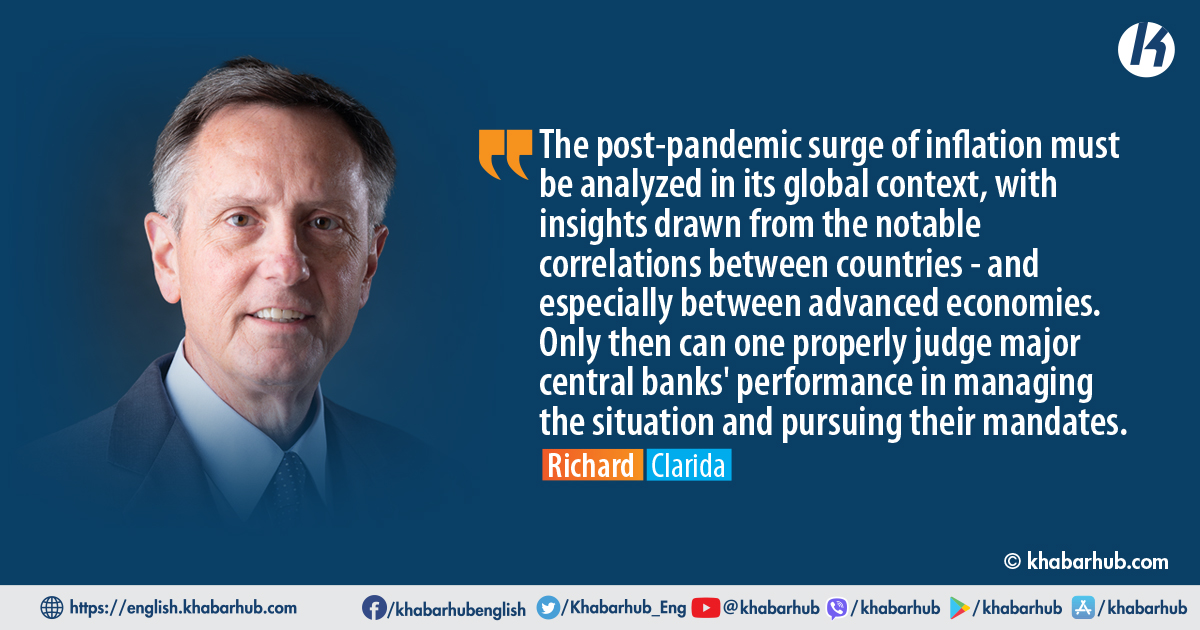Persistent surges in core price inflation (which excludes food and energy), and the resulting overshoot of central-bank inflation targets, have been a distinctive and distressing feature of the post-pandemic global economic landscape.
When confronted with such an economically significant phenomenon, those of us who pay attention to the relevant international evidence will look for common factors to account for the observed correlation between countries. I can think of at least three.
First, there is ample evidence to suggest that the initial surge of inflation across countries in 2021 and 2022 was triggered in part by an adverse shock to aggregate supply.
Second, there was substantial (and, in the case of the United States, unprecedented) fiscal and monetary policy support, delivered first in 2020-21, to cushion the blow to economic activity and employment, and again in 2022 (especially in Europe), to offset the higher energy and food prices caused by Russia’s invasion of Ukraine.
Across the advanced economies, central banks responded to the COVID-19 shock by deploying various combinations of interest-rate cuts (or keeping rates at the effective lower bound), offering forward guidance, and expanding their balance sheets via large-scale quantitative-easing (QE) programs.
Interestingly, between 2020 and 2022, there was more cross-country variation in the scale of fiscal policies than in the scale of monetary policies.
When considering the monetary-policy response to the 2021-22 global surge of inflation, it is noteworthy that no advanced-economy central bank began to hike rates until headline inflation had already exceeded its target rate.
While correlation is not causation, it bears mentioning that there was a much stronger correlation – at least in 2020-22 – between the cross-country fiscal response to the pandemic and cross-country inflation than there was between cross-country growth in the monetary base and inflation.
A third common factor contributing to the post-pandemic inflation surge was a large and persistent change in sectoral relative prices, especially the relative prices of goods versus services.
Making this argument does not require one to take a stand on how much the initial increase in the relative price of goods versus services reflected demand versus supply.
If the equilibrium price of goods goes up for whatever reason, the overall price level will go up unless the central bank wants to engineer a decline in the price of services.
If there is some nominal price rigidity in the service sector, the central bank has a choice.
It can allow the relative price increase to pass through and accept a one-time increase in the price level (which in isolation would produce “transitory” inflation).
Or, it can hike rates and throw people out of work to reduce the price of services sufficiently to keep the increase in the price index equal to the inflation target.
In the event, central banks opted, at least initially, to accommodate the price pressures by not trying to offset the increase in the relative price of goods versus services.
And now, underlying inflation across advanced economies appears to have peaked. With the unwinding of the adverse supply disruptions that contributed to the initial inflation surge, it seems to be on a downward trajectory – heading back toward official inflation targets.
When considering the monetary-policy response to the 2021-22 global surge of inflation, it is noteworthy that no advanced-economy central bank began to hike rates until headline inflation had already exceeded its target rate.
Equally, nearly all advanced-economy central banks (save Switzerland and Norway) delayed rate hikes until core inflation, too, had already exceeded their respective targets.
The question that many have asked is why monetary policies across most advanced economies “fell behind the curve” in this way.
Critics of the US Federal Reserve (where I served as vice chair from September 2018 to January 2022) suggest that a persistent inflation overshoot, and a delay in lifting rates until inflation was already above target, must stem from a failure of the underlying monetary-policy framework.
According to this reasoning, the post-pandemic record (summarized in Chart 1) indicates a breakdown of both inflation targeting and its “first cousin,” flexible average inflation targeting, which the Fed adopted in August 2020.
I beg to differ. As I argue in a recent paper, the post-pandemic record is better understood as resulting from ex-post errors of tactics and execution, not from the monetary-policy frameworks.
Remember, the Fed committed in September 2020 to delay liftoff (rate hikes) until “labor market conditions … reached levels consistent with … maximum employment and inflation ha[d] risen to 2 percent.”
I suspect that the mantra of “lower for longer,” which prevailed among central banks for most of the previous decade, will soon be replaced by “higher for as long as it takes.”
It then followed up in December 2020 with guidance that it would begin to taper the pace of QE asset purchases only after “substantial further progress” had been made toward its maximum-employment and price-stability goals.
But while these commitments were certainly consistent with the Fed’s new framework, they were not required by it.
Moreover, the employment and inflation conditions for liftoff that the Fed had committed to in September 2020 were met by September 2021, close to the liftoff date that the standard Taylor Rule framework would have set.
And now, underlying inflation across advanced economies appears to have peaked. With the unwinding of the adverse supply disruptions that contributed to the initial inflation surge, it seems to be on a downward trajectory – heading back toward official inflation targets.
Having hiked rates aggressively, central bankers appear to be close to the end of the global post-pandemic tightening cycle.
Their judgment is that they have moved rates into sufficiently restrictive territory and that if current policies are sustained for some time, inflation will eventually return to target.
I suspect that the mantra of “lower for longer,” which prevailed among central banks for most of the previous decade, will soon be replaced by “higher for as long as it takes.”
(Richard Clarida is Global Economic Adviser at PIMCO, Professor of Economics and International Affairs at Columbia University, and a research associate at the National Bureau of Economic Research)
(Copyright: Project Syndicate)









Comment